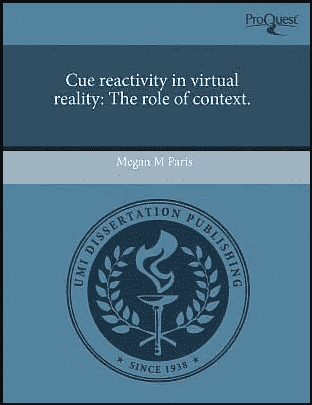书籍简介:
Cigarette smokers in laboratory experiments readily respond to smoking stimuli with increased craving. An alternative to traditional cue-reactivity methods (e.g., exposure to cigarette photos), virtual reality (VR) has been shown to be a viable cue presentation method to elicit and assess cigarette craving within complex virtual environments. However, it remains poorly understood whether contextual cues from the environment contribute to craving increases in addition to specific cues, like cigarettes. This study examined the role of contextual cues in a VR environment to evoke craving. Smokers were exposed to a virtual convenience store devoid of any specific cigarette cues followed by exposure to the same convenience store with specific cigarette cues added. Smokers reported increased craving following exposure to the virtual convenience store without specific cues, and significantly greater craving following the convenience store with cigarette cues added. However, increased craving recorded after the second convenience store may have been due to the pre-exposure to the first convenience store. This study offers evidence that an environmental context where cigarette cues are normally present (but are not), elicits significant craving in the absence of specific cigarette cues. This finding suggests that VR may have stronger ecological validity over traditional cue reactivity exposure methods by exposing smokers to the full range of cigarette-related environmental stimuli, in addition to specific cigarette cues, that smokers typically experience in their daily lives.
作者简介:
暂无
出版时间:
暂无
章节目录:
暂无
封面图:
